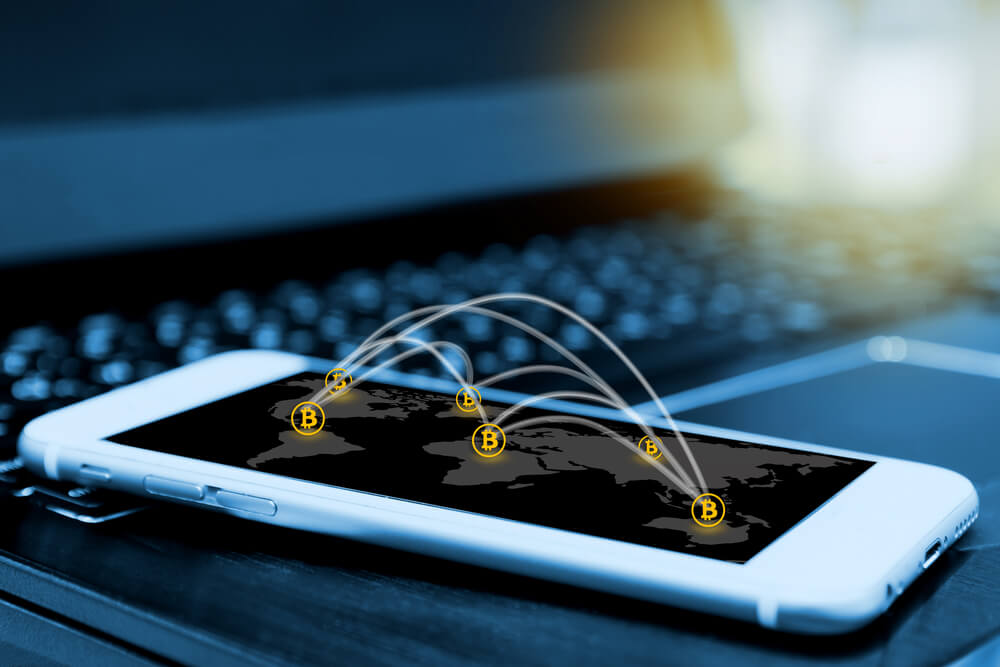Decentralized Finance (DeFi) has emerged as a revolutionary force in the financial world, reshaping traditional notions of banking and investing. In a world increasingly dominated by technology, DeFi leverages blockchain and smart contract technologies to offer a decentralized alternative to conventional financial systems.
In this article, the team behind The World Web3 Conference will delve into the concept of decentralized finance, explore how it works, and discuss both its merits and potential challenges.
Understanding Decentralized Finance
Decentralized Finance, often abbreviated as DeFi, is a collective term for a range of financial services and applications that operate on blockchain networks. Unlike traditional financial systems that rely on centralized authorities such as banks and governments, DeFi leverages the decentralized nature of blockchain technology to provide financial services directly between users, eliminating the need for intermediaries.
Key Components of DeFi
Smart Contracts: At the heart of DeFi are smart contracts, self-executing contracts with the terms directly written into code. These contracts automate and enforce agreements, removing the need for intermediaries and reducing the risk of fraud. Ethereum, a decentralized cryptocurrency platform, is a popular choice for hosting DeFi applications due to its robust support for smart contracts.
Decentralized Exchanges (DEXs): Traditional exchanges are centralized entities that facilitate the buying and selling of assets. In contrast, decentralized exchanges operate without a central authority, allowing users to trade directly with one another. Notable examples include Uniswap and SushiSwap, which enable users to swap various cryptocurrencies without relying on a centralized exchange.
Lending and Borrowing Platforms: DeFi platforms offer decentralized lending and borrowing services, allowing users to lend their cryptocurrencies to earn interest or borrow assets against their holdings. This is facilitated through smart contracts, ensuring transparent and automated transactions. Aave and Compound are prominent examples of DeFi lending protocols.
Stablecoins: To address the volatility associated with cryptocurrencies, DeFi platforms often use stablecoins, which are cryptocurrencies pegged to the value of traditional fiat currencies like the US Dollar. Stablecoins like DAI and USDC provide a stable store of value within the decentralized ecosystem.
How DeFi Works

DeFi operates on blockchain networks, with Ethereum being a predominant platform. Participants interact with DeFi applications through digital wallets, enabling them to execute transactions and access various financial services. The process involves:
Creating a Digital Wallet: Users begin by creating a digital wallet, a secure software application that allows them to store, send, and receive cryptocurrencies. This wallet is the user’s gateway to the DeFi ecosystem.
Depositing Funds: Users deposit their cryptocurrency assets into the DeFi protocol of their choice. These assets are locked into smart contracts, providing liquidity for various decentralized services.
Executing Transactions: DeFi applications enable users to execute various financial transactions, including trading, lending, borrowing, and yield farming. Smart contracts automatically enforce the agreed-upon terms, ensuring trustless and secure transactions.
Earning Rewards: Participants in DeFi can earn rewards through various mechanisms, such as staking and liquidity provision. Staking involves locking up assets to support the network’s operations, while liquidity provision involves supplying assets to decentralized exchanges.
Pros of DeFi
Accessibility:
The accessibility offered by DeFi is a game-changer in the financial landscape. Traditional banking systems often require individuals to meet specific criteria, have a physical presence, or adhere to stringent regulatory requirements. DeFi, on the other hand, operates on the Internet, making financial services accessible to anyone with an Internet connection.
This accessibility is particularly significant for the unbanked and underbanked populations around the world. Many individuals, especially in developing countries, lack access to basic banking services due to factors such as geographical remoteness, lack of documentation, or exclusion from traditional financial systems. DeFi bridges this gap, allowing individuals to participate in financial activities without the need for a traditional bank account. This inclusivity empowers people who were previously excluded from the formal financial sector to engage in activities like savings, investments, and lending.
Moreover, DeFi’s borderless nature ensures that financial services are not limited by geographical boundaries. This is especially beneficial for individuals in regions with limited access to traditional banking infrastructure, providing them with opportunities that were previously unimaginable.
Reduced Intermediaries
One of the primary advantages of DeFi is the elimination of intermediaries, such as banks and other financial institutions. In traditional finance, every transaction typically involves several intermediaries, each adding its own set of fees and delays. DeFi, powered by blockchain technology and smart contracts, enables users to interact directly with decentralized protocols, cutting out unnecessary intermediaries.
This reduction in intermediaries not only streamlines financial processes but also leads to cost savings for users. Without the need for banks or other middlemen, transaction fees are significantly lower. Users can enjoy more direct and cost-effective financial interactions, whether it’s trading, lending, or borrowing.
The removal of intermediaries also contributes to faster transaction settlements. Traditional financial systems often involve multi-day settlement periods due to the involvement of various parties. DeFi’s direct peer-to-peer transactions, facilitated by smart contracts, result in near-instantaneous settlements, improving overall efficiency.
Transparency
Transparency is a cornerstone of DeFi, thanks to its reliance on blockchain technology. Every transaction conducted within the decentralized ecosystem is recorded on the blockchain, providing an immutable and transparent ledger of financial activities. This transparency builds a high level of trust among users as they can independently verify transactions and holdings.
Participants can track the flow of funds, ensuring that the system operates as intended without hidden fees or unauthorized activities. This transparency not only fosters trust among users but also acts as a deterrent to fraudulent activities, as any suspicious behavior can be easily identified and investigated.
Furthermore, the openness of the blockchain allows users to audit the smart contracts and protocols they engage with. This auditability ensures that users have a clear understanding of the rules and mechanisms governing the DeFi applications they use, enhancing overall accountability within the system.
Innovation
DeFi’s open and collaborative environment serves as a breeding ground for innovation in the financial sector. Traditional finance is often constrained by bureaucratic processes, legacy systems, and a slow pace of change. In contrast, DeFi’s permissionless nature allows developers from around the world to contribute to the ecosystem, creating new and innovative financial products and services.
Smart contracts enable the creation of complex financial instruments, decentralized applications (DApps), and automated trading strategies. This flexibility and openness to experimentation drive continuous innovation within the DeFi space. Developers can iterate quickly, introducing novel solutions to address the evolving needs of users.
Decentralized autonomous organizations (DAOs) are a testament to DeFi’s innovative potential. These entities, governed by smart contracts and community voting, redefine traditional organizational structures, allowing for decentralized decision-making and management.
Challenges of DeFi

Security Concerns: The decentralized nature of DeFi does not make it immune to security vulnerabilities. Smart contract bugs and vulnerabilities can lead to significant financial losses for users. As the space continues to evolve, addressing security challenges is crucial.
Regulatory Uncertainty: The regulatory landscape for DeFi is still evolving, leading to uncertainty about how governments will regulate and oversee decentralized financial activities. This uncertainty can impact the growth and adoption of DeFi.
Volatility: While stablecoins mitigate the volatility of cryptocurrencies to some extent, the underlying assets in DeFi protocols can still be subject to market fluctuations. This volatility introduces risk, affecting the overall stability of the decentralized financial ecosystem.
User Experience: The user experience of interacting with DeFi platforms can be complex for non-technical users. Improving the user interface and experience is essential for broader adoption and acceptance.
Conclusion
Decentralized Finance (DeFi) represents a transformative shift in the way financial services are delivered and accessed. With its foundation in blockchain technology and smart contracts, DeFi eliminates the need for traditional intermediaries, offering a more accessible, transparent, and innovative financial ecosystem. As the DeFi space continues to evolve, addressing challenges such as security, regulation, and user experience will be pivotal in shaping its long-term success. For those considering entering the world of decentralized finance, careful research, and due diligence are essential to navigate the opportunities and potential risks associated with DeFi investment.


